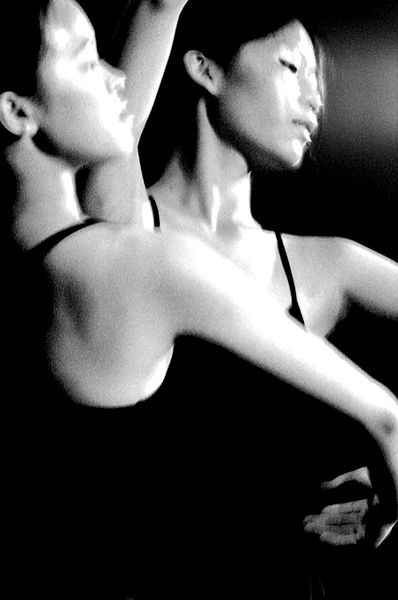 As dancers, we sometimes hit that mid-training rut, where we have had enough of the pliés, the tendus, the jetés, and definitely had enough of the pirouettes. With July turning into a bit of a scorcher, there can also be more appealing things than dressing head-to-toe in Lycra leotards and tights, let alone legwarmers!
As dancers, we sometimes hit that mid-training rut, where we have had enough of the pliés, the tendus, the jetés, and definitely had enough of the pirouettes. With July turning into a bit of a scorcher, there can also be more appealing things than dressing head-to-toe in Lycra leotards and tights, let alone legwarmers!
However, it is easy to forget the great benefits of all kinds of dance, especially when sweating along to the Waltz of the Flowers or a similarly clichéd tune. Ballet in particular is a fantastic way for dancers of all ages to increase fitness, flexibility and all-round wellbeing whilst relieving stress and taking part in an activity you enjoy rather than pounding the treadmill. In particular, ballet promotes correct stance, deportment and a more streamlined body shape, with the dancer having pulled up the muscles, turned out the legs from the hip joints and lengthened out of the neck to appear more graceful. Even attempting new movements promotes the body’s resilience and supportive strength through dance classes and rehearsals. Dance offers great variety of methods of keeping fit and flexible, working many different types of muscles; Delayed Onset Muscle Soreness (DOMS*) is a great way of discovering new muscles you didn’t know you had!
Once you have learnt to use the correct postural muscles it is easy to achieve a look of a flat stomach and toned legs whilst working harder towards these dance goals. In this sense, it is particularly useful to combine ballet classes with dance classes of other techniques in order to complement your body’s work and created a fully-rounded dancer that is not pigeon-holed. There are many types of dance classes readily available, such as various forms of street dance, jazz, tap, and even complementary techniques such as Pilates and yoga. Used alone or as a dancing cocktail mix, the techniques all work to challenge the body in different ways and ensure it does not become complacent! Whilst the benefits of ballet are clear ‘across the board’, other dance techniques also aim for the same goal and the joy of dance yet pursue it differently. For example, ballet, jazz and yoga or Pilates are all fantastic ways to increase leg and back flexibility and strengthen the core, yet employ different exercises in order to keep the body from becoming stagnant.
Ballet targets certain muscles through its training techniques, which also means that these areas of the body must be stretched and cared for in order to progress. The hamstrings and quadriceps, and adductors and abductors (inner and outer thigh muscles) – as opposite sides of the leg – are all worked in different ways, therefore the correct stretches must be carried out post-class for each. For ballet in particular, even holding the arms correctly as an extension of the back works the latissimus dorsi extremely hard, which are muscles often overlooked by the eagerly training dancer. As a result, stretching exercises come hand in hand with all disciplines of dance, not just ballet, and are an efficient way to keep the body mobile and maintaining the discipline and hard work of the class. For ballet in particular, muscle tone and suppleness also comes from stretching muscles such as the hip flexors, quadriceps, hamstrings, calves, soleus and the gluteus maximus and medius, for flexibility, jumps and turn out.
Many dance teachers advocate that ballet is the basis of all dance and maintain that it is needed as a solid foundation on which to build the rest of your dance training. Even if you disagree with this, it is clear that ballet and then other kinds of dance forms are needed to complement and balance out your dance work, in order to provide yourself with an all-round training that provides enjoyment and body benefits. Whilst it is not always a cardio workout, ballet works the body hard, keeps joints active and induces great discipline both for the body and the mind by requiring short bursts of intense, anaerobic exercise. By taking regular ballet classes you are constantly increasing the capacity and ability of the body, in particular, strengthening the legs and encouraging flexibility.
Increased muscle tone, flexibility and ability all contribute towards the wide goal of staying fit and healthy as part of having a healthy, dancing lifestyle. Dance can greatly contribute towards weight-loss, particularly by following a rich and varied programme of a combination of dance styles to balance out the training. With jazz dance a great cardio challenge, ballet can complement and tone up these newly found muscles, and other techniques such as Pilates and yoga used to maintain flexibility and peace of mind amongst the madness that is the world of dance!
* DOMS is muscle pain, soreness and stiffness which occur 24-48 hours after a changed or increased workout (dance) or workout intensity.
Image courtesy of Wikimedia Commons.
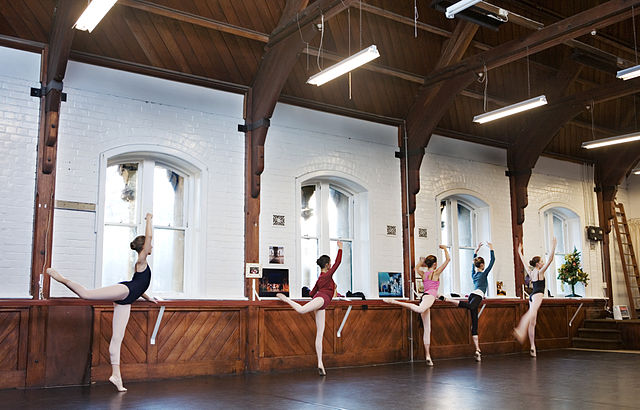 Choosing a dance school is of utmost importance for your budding dancer. For young dancers it is important they have fun in addition to learning about the dance basics before they progress further. With older dancers who are changing dance studios, it may be an idea to find out where current and former students of the studio are and what they are doing. Depending on how serious your child is about dance, it is importance to find a dance school with excellent technical training alongside a passion for developing youth dance.
Choosing a dance school is of utmost importance for your budding dancer. For young dancers it is important they have fun in addition to learning about the dance basics before they progress further. With older dancers who are changing dance studios, it may be an idea to find out where current and former students of the studio are and what they are doing. Depending on how serious your child is about dance, it is importance to find a dance school with excellent technical training alongside a passion for developing youth dance.
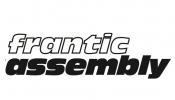 Physical theatre company Frantic Assembly is set to partner with Coventry University in order to deliver a postgraduate qualification in theatre-making, much to the delight of many of its fans and followers. The two organisations have claimed this marks the first time a professional theatre company has been involved in the creation of a master’s degree programme in the UK, and is thought to offer participants an enriched and all-round fulfilling education.
Physical theatre company Frantic Assembly is set to partner with Coventry University in order to deliver a postgraduate qualification in theatre-making, much to the delight of many of its fans and followers. The two organisations have claimed this marks the first time a professional theatre company has been involved in the creation of a master’s degree programme in the UK, and is thought to offer participants an enriched and all-round fulfilling education. Musical theatre is captivating for many people, where the magic of illusion makes anything possible. For professional musical theatre performers, being on stage is the culmination of years of training and hard work; often encompassing more skills than were originally required by becoming a triple threat of singing, acting and dance. Now productions require an ever-increasing range of skills, such as puppetry and stilt-walking (Lion King), acrobatics (Pippin), playing a musical instrument (Fiddler on the Roof) and roller-skating (Starlight Express).
Musical theatre is captivating for many people, where the magic of illusion makes anything possible. For professional musical theatre performers, being on stage is the culmination of years of training and hard work; often encompassing more skills than were originally required by becoming a triple threat of singing, acting and dance. Now productions require an ever-increasing range of skills, such as puppetry and stilt-walking (Lion King), acrobatics (Pippin), playing a musical instrument (Fiddler on the Roof) and roller-skating (Starlight Express). It is often a revelation to dance in a studio without mirrors. Some dancers may feel uncomfortable and uncertain at first not to have mirrors, as they are not to be able to see what they are doing and check they are performing the exercises correctly. Despite this many would argue that the movement will feel right for the body, and mirrors are not required to feel this as they encourage dancers to ‘make shapes’ rather than initiate the movement from an internal source.
It is often a revelation to dance in a studio without mirrors. Some dancers may feel uncomfortable and uncertain at first not to have mirrors, as they are not to be able to see what they are doing and check they are performing the exercises correctly. Despite this many would argue that the movement will feel right for the body, and mirrors are not required to feel this as they encourage dancers to ‘make shapes’ rather than initiate the movement from an internal source.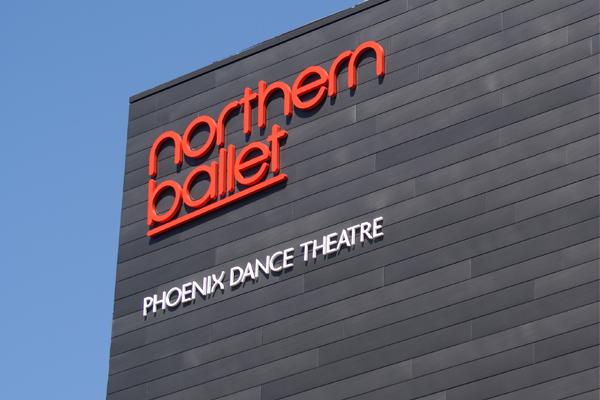 The Academy of Northern Ballet will celebrate the 10th anniversary of the Centre for Advanced Training (CAT) programme it runs with a fundraising Gala to support the dancing stars of the future. The summer garden themed Gala will take place on 29 June, organised by Northern Ballet’s Leading Soloist Hannah Bateman. It will include exclusive performances by the Academy’s CAT students, past and present, as well as afternoon tea and a drinks reception.
The Academy of Northern Ballet will celebrate the 10th anniversary of the Centre for Advanced Training (CAT) programme it runs with a fundraising Gala to support the dancing stars of the future. The summer garden themed Gala will take place on 29 June, organised by Northern Ballet’s Leading Soloist Hannah Bateman. It will include exclusive performances by the Academy’s CAT students, past and present, as well as afternoon tea and a drinks reception. The Royal Ballet School will launch a new teachers’ course starting in September 2014: the Diploma of Dance Teaching will build on the highly successful Professional Dancer Teachers’ Course and the expertise of the school’s Dance Partnership & Access Programme, to provide a good foundation in both technical and creative approaches to teaching ballet. The course will be delivered by Royal Ballet School staff and visiting lecturers in The Royal Ballet School’s state of the art studios in Covent Garden, London.
The Royal Ballet School will launch a new teachers’ course starting in September 2014: the Diploma of Dance Teaching will build on the highly successful Professional Dancer Teachers’ Course and the expertise of the school’s Dance Partnership & Access Programme, to provide a good foundation in both technical and creative approaches to teaching ballet. The course will be delivered by Royal Ballet School staff and visiting lecturers in The Royal Ballet School’s state of the art studios in Covent Garden, London.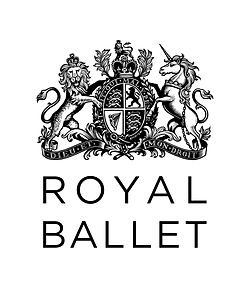 The Royal Ballet is set to launch a year-long training scheme for graduate dancers, aimed at providing female ballerinas in particular with an “extra chance” to gain employment in the industry.
The Royal Ballet is set to launch a year-long training scheme for graduate dancers, aimed at providing female ballerinas in particular with an “extra chance” to gain employment in the industry. On 10 September the Royal Academy of Dance will be launching Progressions: the launch of the new Advanced Foundation, 1 & 2 syllabi. It will be a virtual launch of the new work of the vocational graded examinations meaning members and non members alike will be able to watch the first ever virtual launch of new RAD syllabi on 10 September. Also on offer to engage with are demonstrations of the new advanced work, interviews with the creative panel and even a live Twitter question and answer session.
On 10 September the Royal Academy of Dance will be launching Progressions: the launch of the new Advanced Foundation, 1 & 2 syllabi. It will be a virtual launch of the new work of the vocational graded examinations meaning members and non members alike will be able to watch the first ever virtual launch of new RAD syllabi on 10 September. Also on offer to engage with are demonstrations of the new advanced work, interviews with the creative panel and even a live Twitter question and answer session. As dancers, we sometimes hit that mid-training rut, where we have had enough of the pliés, the tendus, the jetés, and definitely had enough of the pirouettes. With July turning into a bit of a scorcher, there can also be more appealing things than dressing head-to-toe in Lycra leotards and tights, let alone legwarmers!
As dancers, we sometimes hit that mid-training rut, where we have had enough of the pliés, the tendus, the jetés, and definitely had enough of the pirouettes. With July turning into a bit of a scorcher, there can also be more appealing things than dressing head-to-toe in Lycra leotards and tights, let alone legwarmers!